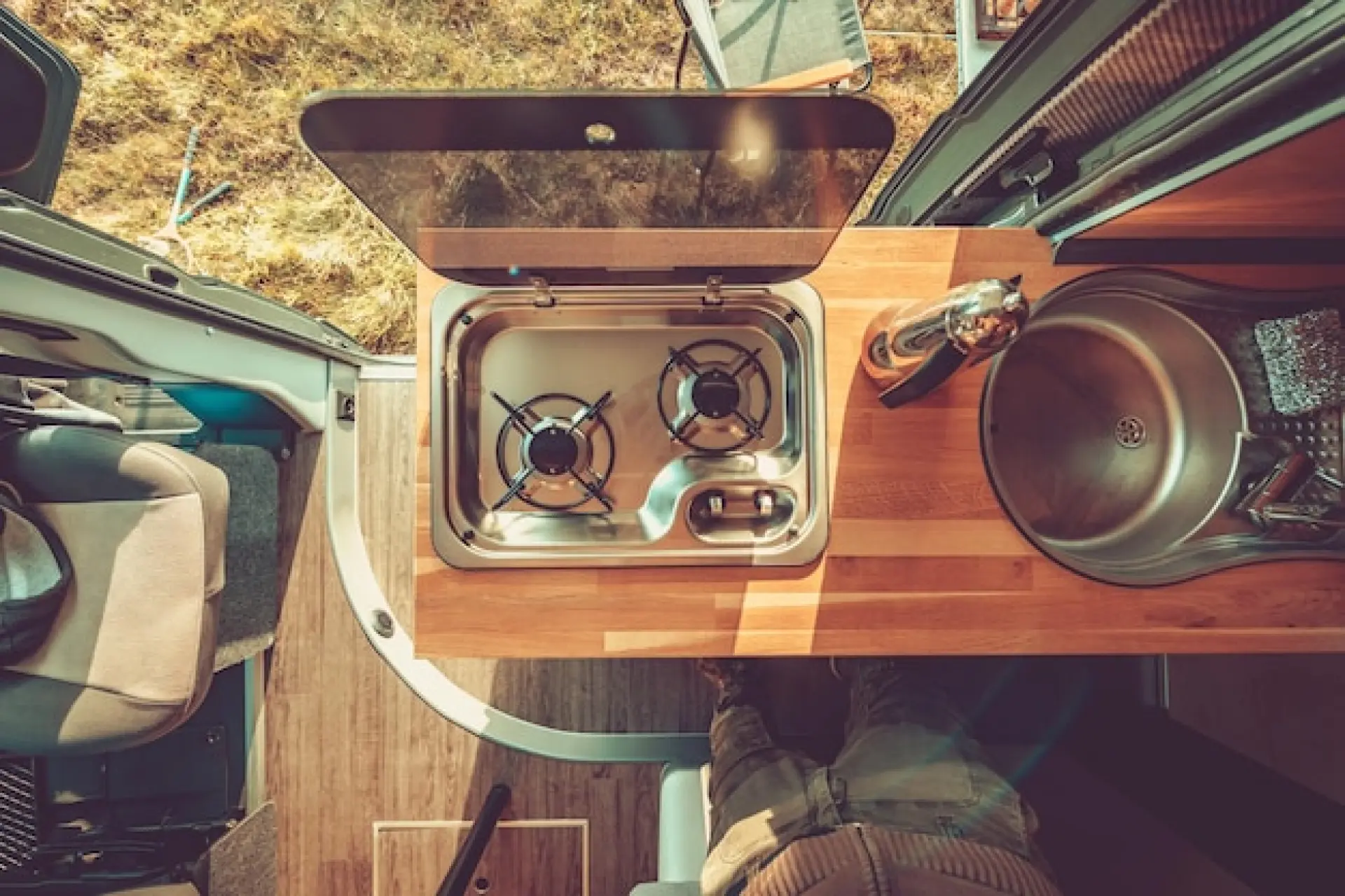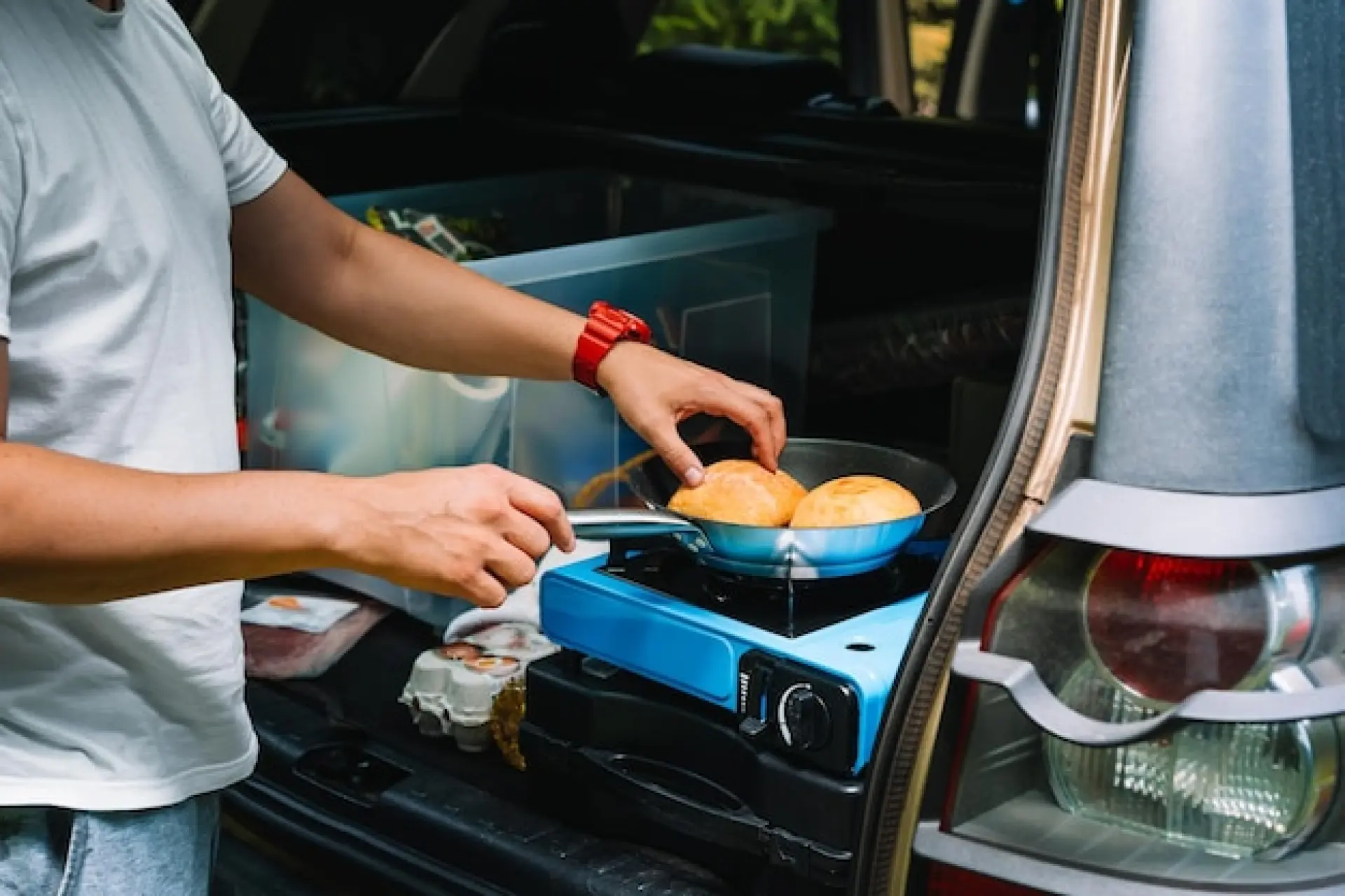Understand the role of carbon monoxide detectors and why they're critical in motorhomes. Learn about CO dangers, detector function, and installation tips.
What is Carbon Monoxide and Why is it Dangerous?
Carbon monoxide (CO) is a colourless, odourless, and tasteless gas that is highly toxic to humans and animals. It is produced when fuels such as gas, petrol, wood, and charcoal burn incompletely. When inhaled, CO prevents the blood from carrying oxygen, leading to symptoms like headaches, dizziness, nausea, confusion, and, in severe cases, unconsciousness or death.
Motorhome users are particularly at risk due to the enclosed living space, where CO can accumulate quickly if ventilation is poor. Without a detector, it is nearly impossible to notice its presence, making CO a silent but deadly hazard. Installing a carbon monoxide detector in your motorhome is essential to ensuring your safety while on the road.
Common Sources of Carbon Monoxide in Motorhomes
Motorhomes contain several potential sources of carbon monoxide. Gas-powered appliances such as stoves, heaters, and water boilers can produce CO if they are faulty or used without proper ventilation.
Engine exhaust fumes can also pose a risk, especially if the motorhome is idling near an enclosed area. Portable generators, often used for additional power, are another significant source of CO if operated too close to the vehicle.
Even campfires or barbecues placed too near a motorhome can lead to dangerous gas entering through windows or vents. Understanding these risks helps motorhome owners take precautions, such as ensuring appliances are well-maintained and only using generators and outdoor cooking equipment in well-ventilated areas.

Many motorhome owners are unaware of how easily carbon monoxide can build up in enclosed spaces. Even a small amount of CO can lead to poisoning if exposure is prolonged, making it especially dangerous when sleeping.
Poorly maintained appliances and blocked ventilation systems increase the risk, as they can prevent harmful gases from escaping.
External factors, such as wind direction, can also push engine or generator fumes back into the vehicle through air vents or open doors.
Cold weather conditions further increase the danger, as people tend to keep windows and vents closed, reducing airflow. It is crucial to conduct routine checks on all fuel-burning appliances, ensuring flues and vents remain clear and functioning.
How Carbon Monoxide Detectors Work
Carbon monoxide detectors are designed to alert you to dangerous levels of CO before they become life-threatening. They contain sensors that detect CO in the air and trigger an alarm when the concentration reaches a hazardous level. Some detectors use electrochemical sensors, which generate an electric current when exposed to CO, while others rely on biomimetic sensors that change colour upon contact with the gas.
Most models feature audible alarms, and some include digital displays showing real-time CO levels. Battery-operated or hardwired options are available, with some detectors also integrating with smoke alarms for added safety. A reliable CO detector provides early warning, giving occupants time to ventilate the space and evacuate if necessary.
Where to Install a Carbon Monoxide Detector in Your Motorhome
Proper placement of a carbon monoxide detector is crucial for its effectiveness. Since CO is slightly lighter than air, it mixes evenly throughout the space rather than rising like smoke. Install a detector at breathing height, such as near sleeping areas, to ensure it alerts you quickly if CO is detected.
If your motorhome has multiple sections, consider placing additional detectors in key areas like the kitchen and near gas appliances. Avoid installing detectors near windows, vents, or extractor fans, as these can interfere with accurate readings. Always follow the manufacturer’s instructions to ensure optimal positioning and function of your detector for maximum safety.

In addition to placing CO detectors in sleeping areas, it is recommended to install one near each fuel-burning appliance, including cookers, water heaters, and generators.
If your motorhome has a separate living space or a bedroom with a door, a detector should be placed inside each enclosed room. Some motorhomes have built-in garages or storage spaces where fuel-burning equipment is stored; in these cases, installing an additional CO detector in these areas adds an extra layer of safety.
It is also important to ensure that detectors are mounted according to the manufacturer’s instructions—some models work best when positioned on walls, while others may be designed for ceiling installation.
How Often Should You Test and Replace Your Detector?
Regular testing and maintenance of your carbon monoxide detector are essential for continued protection. Most manufacturers recommend testing the alarm weekly by pressing the test button to ensure it is functioning correctly. Batteries should be replaced at least once a year, or as indicated by a low battery warning. Some models have sealed batteries that last for up to ten years.
The detector itself should be replaced every five to ten years, depending on the manufacturer’s guidelines. Dust and debris can also affect performance, so it’s good practice to clean the detector regularly. Staying on top of maintenance ensures that your detector remains a reliable safeguard against CO poisoning in your motorhome.
We hope you enjoyed our article 'Motorhome Gas Safety Common Risks and How to Avoid Them'. Get in touch to discuss your motorhome needs and let us show you how we can help!
We offer Motorhome Gas Safety Checks for customers throughout Hitchin, Stevenage, Bedford, Luton, Milton Keynes and Hertfordshire.

